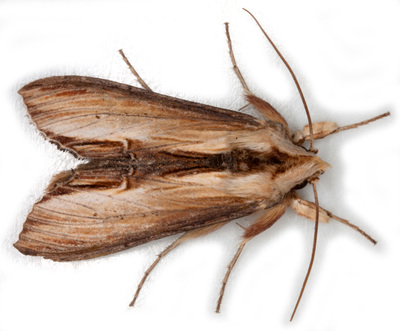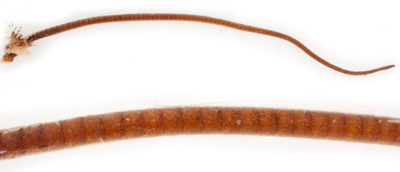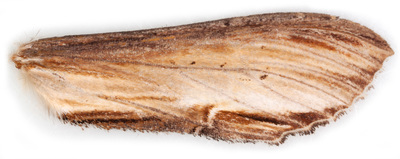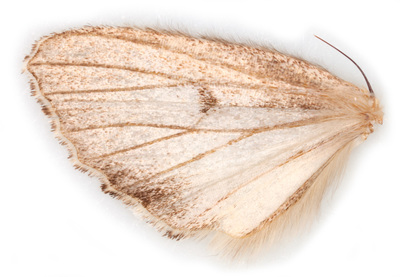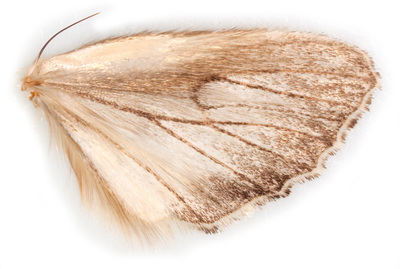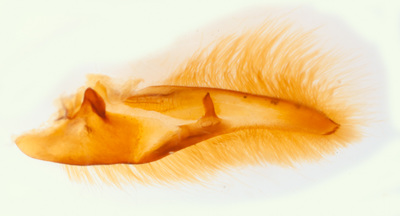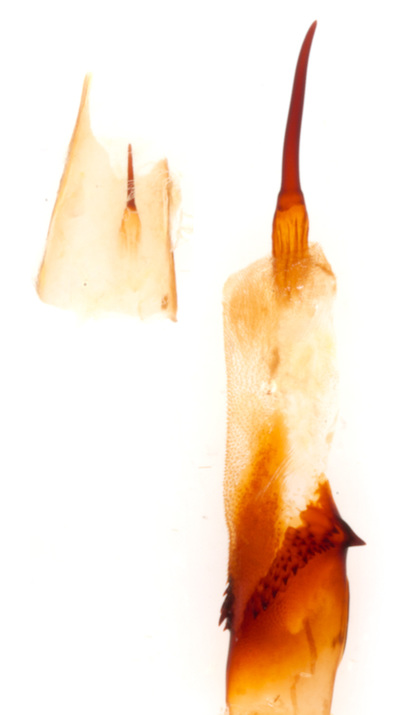73.058 Cucullia (Shargacucullia) verbasci (Mullein)
fw: 19-24mm; Apr-May; mulleins (Verbascum spp), common/water figwort (Scrophularia nodosa/auriculata), buddleias; common on calcareous soils in England, more local in Wales.
ID: Forewing pale brown with diffuse darker brown dorsal and costal streaks, oval and kidney marks absent, termen scalloped. C.asteris (Star-wort) has a grey forewing ground colour, distinct oval and kidney marks and a simple termen. C.lychnitis (Striped Lychnis) flies Jun-Jul and averages smaller (fw 18-21mm) and paler, but is otherwise almost identical to C.verbasci. The central spot on the hindwing underside is generally better marked in C.verbasci – but this is a relative distinction and genital examination is required. C.scrophulariae (Water Betony) is said to be intermediate in external appearance between C.verbasci and C.lychnitis! See Difficult Species Guide. Both sexes of all three species are shown at Dissection Group.
Male genitalia: The valva of C.verbasci tapers without an obvious cucullus, while that of both C.lychnitis and C.scrophulariae expands at the apex to form a cucullus (similar to C.asteris in shape).
Female genitalia: Ductus bursae is broad and entirely sclerotised in all three species. In C.verbasci it is shorter than the ovipositor, while in C.lychnitis and C.scrophulariae it is longer than the ovipositor.
Male genitalia: The valva of C.verbasci tapers without an obvious cucullus, while that of both C.lychnitis and C.scrophulariae expands at the apex to form a cucullus (similar to C.asteris in shape).
Female genitalia: Ductus bursae is broad and entirely sclerotised in all three species. In C.verbasci it is shorter than the ovipositor, while in C.lychnitis and C.scrophulariae it is longer than the ovipositor.
Dissection
Male genitalia
§1 Bryher, Isles of Scilly; 08/04/2007
§2 Foulness, Essex; 22/05/2011; male; fw 24.5mm
All images © Chris Lewis
§2 Foulness, Essex; 22/05/2011; male; fw 24.5mm
All images © Chris Lewis
Page published 06/04/2015 (§1-2)

